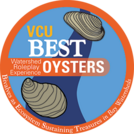
Role Selection and Student Allocation Process
- Subject:
- Earth Resources
- Science
- Material Type:
- Activity/Lab
- Author:
- VCU CISTEME .
- ACSE 1
- Date Added:
- 01/03/2023

Role Selection and Student Allocation Process
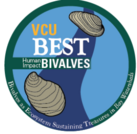
This collection is part of 5 separate overall collections funded through a National Oceanic and Atmospheric Administration (NOAA) Bay Watershed Education and Training (B-WET) grant. The five collections are: 1) VCU Chesapeake Bay Watersheds Mussels Field Studies: Middle School Lessons, 2) VCU Chesapeake Bay Watersheds Oyster Field Studies: Middle School Lessons, 3) VCU Chesapeake Bay Watersheds Mussels Role Play: Secondary Lessons, 4) VCU Chesapeake Bay Watersheds Oysters Role Play: Secondary Lessons, and herein, 5) VCU Chesapeake Bay Watersheds PEWI Mussel Simulation.
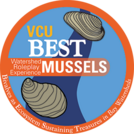
Notification and Role Profile Process
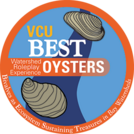
Notification and Role Profile Process

This collection is part of 5 separate overall collections funded through a National Oceanic and Atmospheric Administration (NOAA) Bay Watershed Education and Training (B-WET) grant. The five collections are: 1) VCU Chesapeake Bay Watersheds Mussels Field Studies: Middle School Lessons, 2) VCU Chesapeake Bay Watersheds Oyster Field Studies: Middle School Lessons, 3) VCU Chesapeake Bay Watersheds Mussels Role Play: Secondary Lessons, 4) VCU Chesapeake Bay Watersheds Oysters Role Play: Secondary Lessons, and herein, 5) VCU Chesapeake Bay Watersheds PEWI Mussel Simulation.
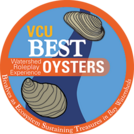
Role Play Instructions

Play Details
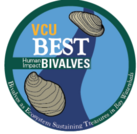
This collection is part of 5 separate overall collections funded through a National Oceanic and Atmospheric Administration (NOAA) Bay Watershed Education and Training (B-WET) grant. The five collections are: 1) VCU Chesapeake Bay Watersheds Mussels Field Studies: Middle School Lessons, 2) VCU Chesapeake Bay Watersheds Oyster Field Studies: Middle School Lessons, 3) VCU Chesapeake Bay Watersheds Mussels Role Play: Secondary Lessons, 4) VCU Chesapeake Bay Watersheds Oysters Role Play: Secondary Lessons, and herein, 5) VCU Chesapeake Bay Watersheds PEWI Mussel Simulation.
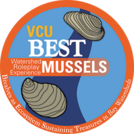
Conference Details
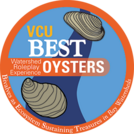
Conference Proceedures
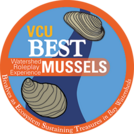
Student Debreifing Proceedure
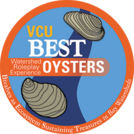
Student Debriefing
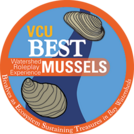
Appendix with all downloadable documents
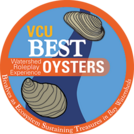
Appendix
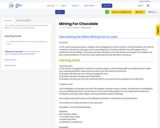
This a hands-on activity that can be used to show the effects of mining on the environment.

Video Description: Find out how rocks brought to Earth by the Apollo astronauts have helped NASA learn more about the rock cycle. Compare igneous, sedimentary and metamorphic rocks found on Earth to three types of rocks found on the moon. Video Length: 4:08.NASA eClipsTM is a suite of online student-centered, standards-based resources that support instruction by increasing STEM literacy in formal and nonformal settings. These free digital and downloadable resources inform and engage students through NASA-inspired, real-world connections.NASA eClips Our World videos (grades 3-5) help students understand the differences between science (the natural world) and engineering (the designed world). These video segments supplement elementary learning objectives not only in science, technology, engineering and mathematics, but also in reading, writing, visual and performing arts.

Video Description: Have you ever wondered where food comes from? Learn how Dr. Catherine Nakalembe uses NASA satellite data to show the health and location of crops around Our World. Maps created from these data help people become more food secure. You can help, too. Using the GLOBE Observer App, you can help scientists validate satellite data by describing land covering through the Adopt a Pixel program. Video Length: 5:23. NASA eClipsTM is a suite of online student-centered, standards-based resources that support instruction by increasing STEM literacy in formal and nonformal settings. These free digital and downloadable resources inform and engage students through NASA-inspired, real-world connections.NASA eClips Our World videos (grades 3-5) help students understand the differences between science (the natural world) and engineering (the designed world). These video segments supplement elementary learning objectives not only in science, technology, engineering and mathematics, but also in reading, writing, visual and performing arts.

Video Description: Our Earth is a dynamic system with diverse subsystems that interact in complex ways.What are those subsystems and how do they interact?How are these subsystems and the global Earth system changing?What causes these changes?How does NASA monitor these changes?How can Earth system science provide societal benefit?Jessica Taylor, an atmospheric scientist at NASA Langley Research Center, and Dr. Steven Pawson, an Earth scientist from NASA Goddard Space Flight Center, help answer these questions and demonstrate how mathematical modeling helps scientists in their predictions of climate, weather, and natural hazards. Video Length: 5:02.NASA eClips Real World segments (grades 6-8) connect classroom mathematics to 21st Century careers and innovations. They are designed for students to develop an appreciation for mathematics through real-world problem solving.

NASA eClips Real World: Food Security -- Monitoring Crops from SpaceVideo Description: Discover how NASA's Earth-observing satellites gather data to monitor food growth. Dr. Inbal Becker-Reshef describes how mathematics is used to interpret satellite data and describe vegetation and crop yield. Dr. Hannah Kerner shares how algorithms and models use NASA data to describe and predict food supply and food shortages. This work through NASA Harvest provides tools for farmers and governments to describe and predict food security worldwide. Video Length: 5:25.NASA eClipsTM is a suite of online student-centered, standards-based resources that support instruction by increasing STEM literacy in formal and nonformal settings. These free digital and downloadable resources inform and engage students through NASA-inspired, real-world connections.NASA eClips Real World segments (grades 6-8) connect classroom mathematics to 21st Century careers and innovations. They are designed for students to develop an appreciation for mathematics through real-world problem solving.

Video Description: Volcanoes play a role in how Earth looks today. Thanks to NASA's missions, we know more about volcanoes in our solar system. Studying volcanoes can teach us about the interior properties of the planets and moons. Learn how the slope equation is used to identify how a volcano was formed. Video Length: 4:46.NASA eClipsTM is a suite of online student-centered, standards-based resources that support instruction by increasing STEM literacy in formal and nonformal settings. These free digital and downloadable resources inform and engage students through NASA-inspired, real-world connections.NASA eClips Real World segments (grades 6-8) connect classroom mathematics to 21st Century careers and innovations. They are designed for students to develop an appreciation for mathematics through real-world problem solving.